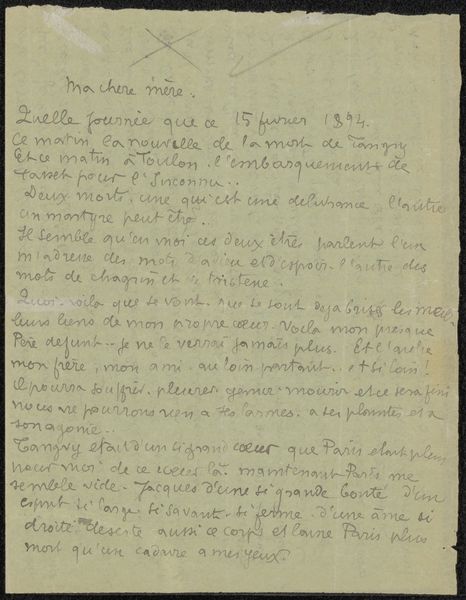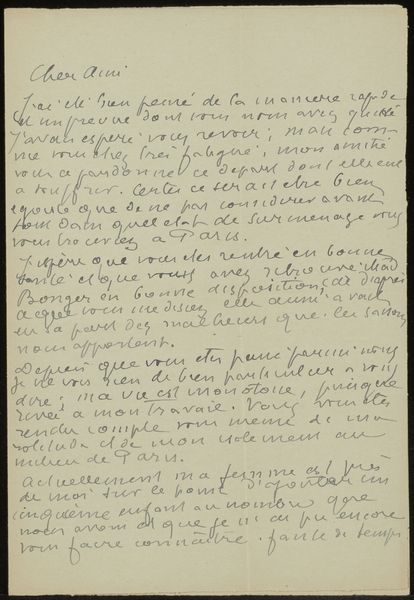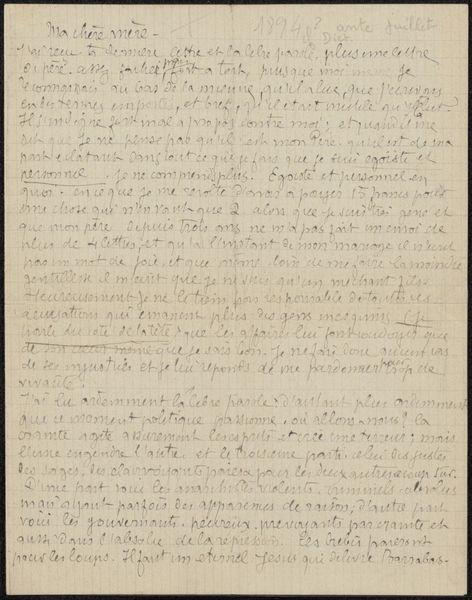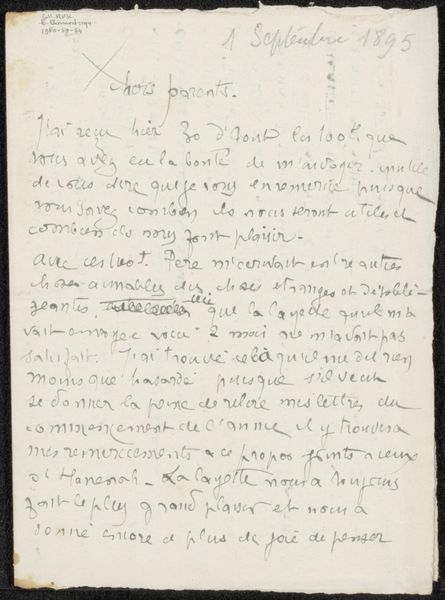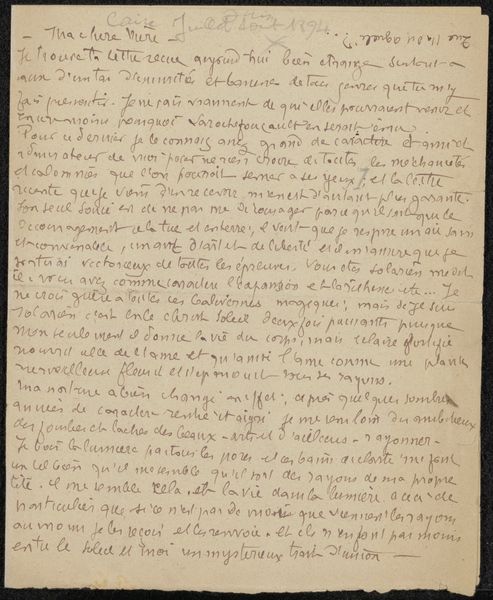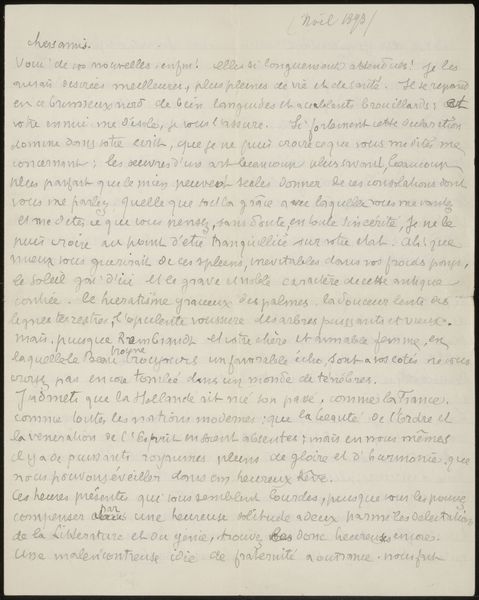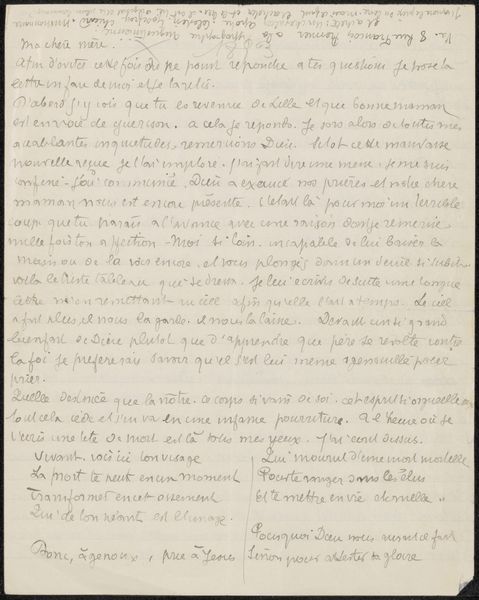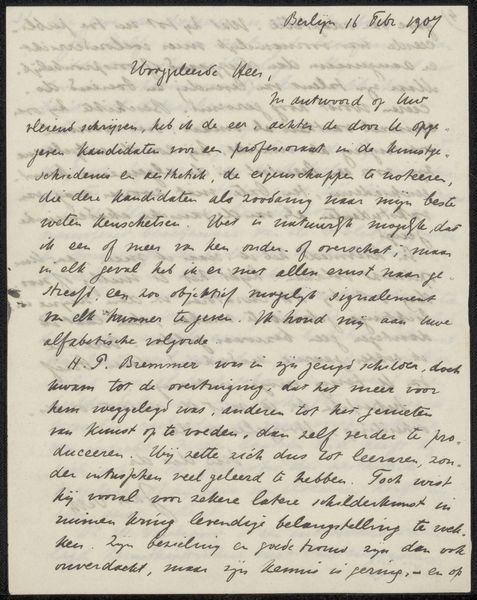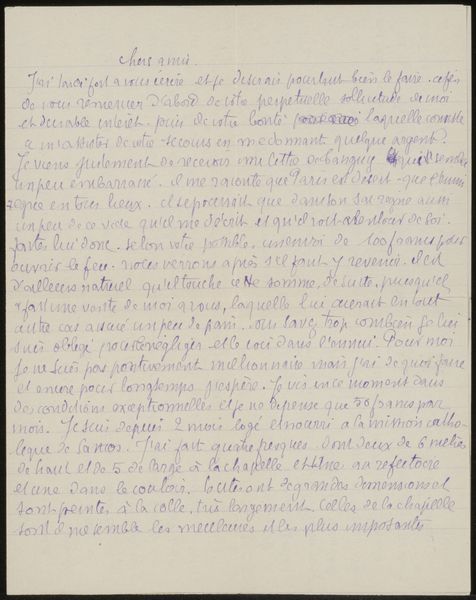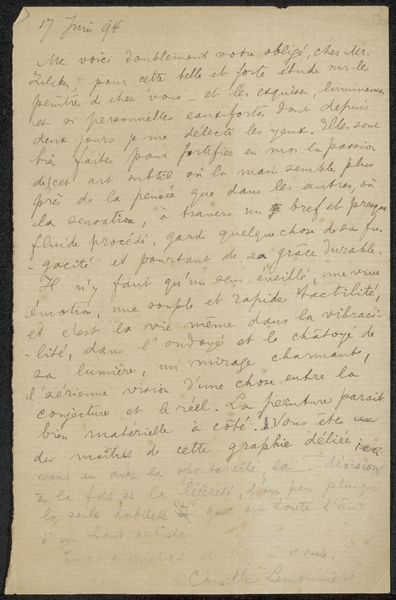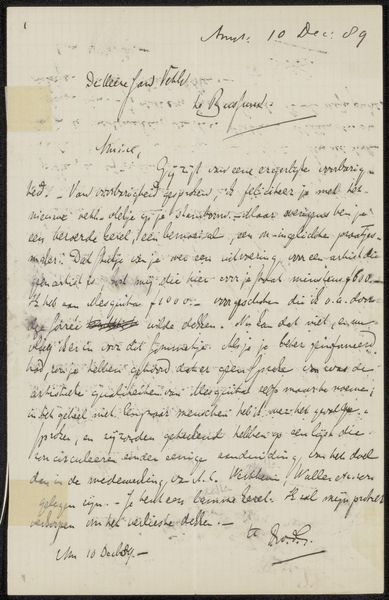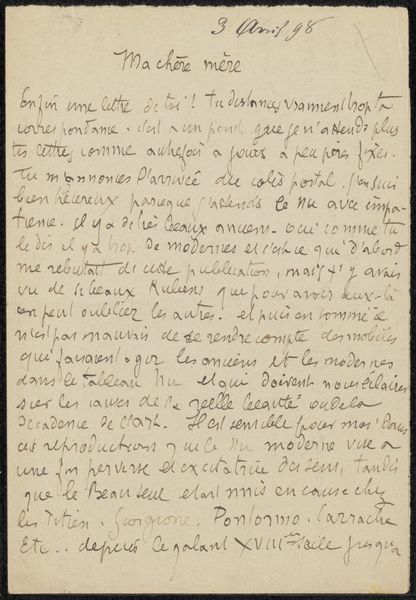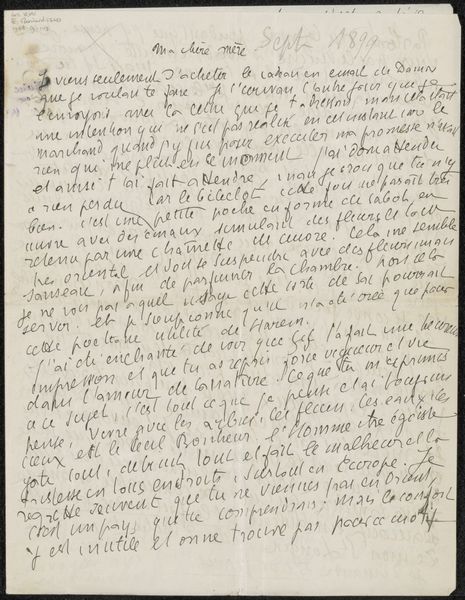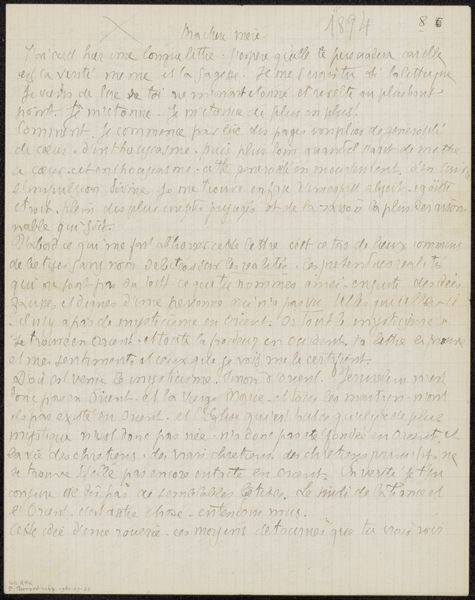
drawing, paper, ink
#
drawing
#
aged paper
#
hand drawn type
#
paper
#
tea stained
#
personal sketchbook
#
ink
#
hand-drawn typeface
#
intimism
#
fading type
#
ink colored
#
symbolism
#
sketchbook drawing
#
sketchbook art
#
columned text
Copyright: Rijks Museum: Open Domain
Curator: Here we have "Brief aan Héloïse Bernard-Bodin," a drawing created in 1894 by Émile Bernard. The work consists primarily of ink on paper. What’s your initial impression? Editor: It has a haunting quality, I must say. The faded, aged paper and delicate script give it an intimate feel, like we’re looking at something deeply personal. The tight columns of the hand-drawn type add to this sensation as well. Curator: Indeed. The visible signs of age are striking. One notes the process and material here lend a textural dimension. The tea-stained, nearly translucent paper really does carry a narrative. The act of physically writing the letter, of applying ink to this particular type of paper, becomes significant. Editor: The application of ink and what type must have been dictated by circumstance. Looking at the arrangement and fading of the letters gives us an insight into how labor and scarcity might have guided Bernard's hand. But if we strip back these social circumstances, is it also reasonable to say the careful composition suggests a considered arrangement? The hand-drawn typeface suggests something highly deliberate. Curator: I think both readings are possible, though I lean more toward intention. Bernard was deeply involved in Symbolist circles; it's fair to view this work within the context of the movement's aesthetic pursuits. The texture adds to the depth. Editor: Yet the materiality undermines such aesthetic considerations by emphasizing the ordinary constraints felt when making a personal, vulnerable object—especially an object as unmediated and functional as a personal letter, and not something precious or sacred. It invites one to look at Bernard as part of a network of relationships tied to available resources. Curator: Ultimately, I agree that both aesthetic and material interpretations offer unique insight into Émile Bernard’s creative choices, allowing a richer understanding of this piece. Editor: Yes, perhaps appreciating how a work can bridge the intimacy of handwritten correspondence and also function as material testimony.
Comments
No comments
Be the first to comment and join the conversation on the ultimate creative platform.
